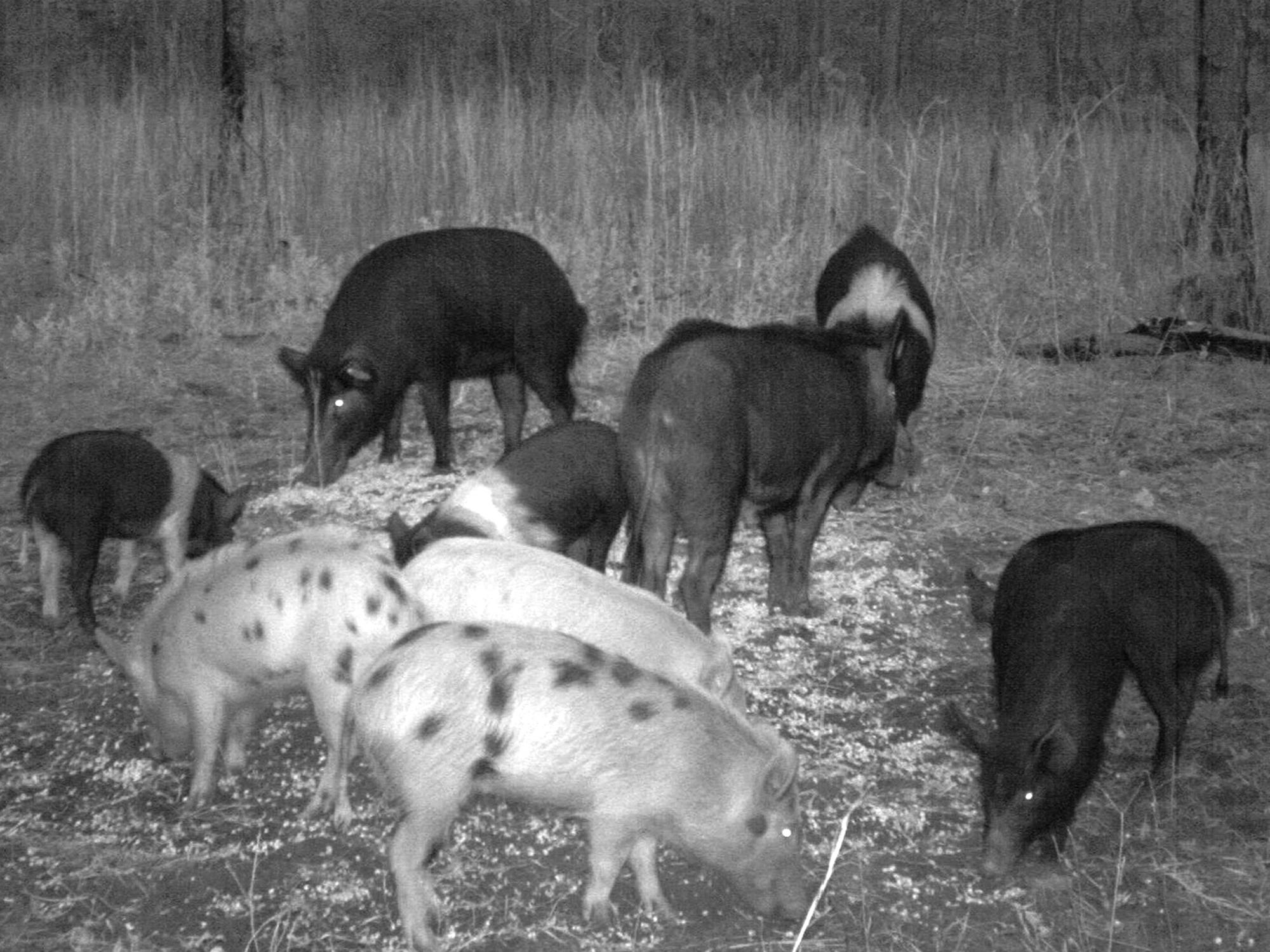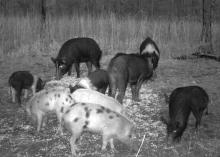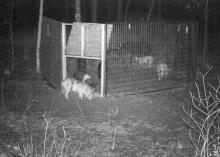Information Possibly Outdated
The information presented on this page was originally released on February 13, 2015. It may not be outdated, but please search our site for more current information. If you plan to quote or reference this information in a publication, please check with the Extension specialist or author before proceeding.
Trapping wild pigs is a process, not an event
STARKVILLE, Miss. -- Wild pigs are a growing problem for property owners, land managers and farmers throughout Mississippi. Because of their high reproductive rate, they can be difficult to control.
Currently, trapping is the best method for controlling wild pigs. Some people may approach trapping by putting out a few portable cage traps and baiting and setting them all at once. But if you are serious about greatly reducing your wild pig problems with the hope of someday being “pig free,” then trapping requires a whole new approach. Here is a five-step process for conducting strategic and systematic wild pig removal.
Step 1: Before ever building a trap, establish bait sites using whole-kernel, shelled corn every 100 to 200 acres across the property. Check the bait sites daily -- late morning to mid-afternoon is best -- to see if wild pigs have found the bait. Monitor each bait site with a game camera to determine when pigs have found the bait.
Step 2: Once pigs have found one or more bait sites, remove all corn from any sites that pigs have not yet visited. Continue to bait and monitor the active sites for several days until you identify how many groups of pigs are using each site and how many pigs are in each group. Now you will know how many pigs you need to trap and remove, as well as what size of trap to build.
Step 3: Now it’s time to build the trap and begin conditioning the pigs to enter the enclosure. Tie open the trapdoor so that pigs are free to come and go. Do not place any corn outside the enclosure. Require pigs to go inside and get it. Continue monitoring the trap with the game camera. Patience is very important. Only when the entire group of pigs is readily entering and leaving the trap should you set it to catch. This may take several days, or it may take as long as a week.
Step 4: When preparing to set the trap, do not place corn just inside the door. Spread it in a shallow pile about 2 to 3 feet long along the sides of the enclosure. Place a half-gallon of corn over the root stick or behind the trip wire. The object is to buy some time for all of the pigs to enter the trap and draw them away from the door before it’s triggered. The trap door is triggered when feeding and rooting pigs push the root stick out from behind the set stakes. Continue trapping until you capture all of the pigs.
Step 5: Follow up by monitoring the property closely for pig activity. If you discover new groups of pigs, begin the five-step process all over again. You have to stay alert, or the problem can get out of hand again quickly. \
The bottom line is there are no quick and easy methods for trapping and removing wild pigs in large enough numbers to make a difference. Whether you are using traditional trapping methods or high-tech, remote-controlled trapping, you have to be “all in.” It takes a lot of planning, time and patience and most likely will be an ongoing process.
Mississippi has specific laws regarding baiting and trapping wild pigs. Contact the Mississippi Department of Wildlife, Fisheries, & Parks or visit their website, http://www.mdwfp.com, to view wild pig trapping regulations and to obtain the necessary permits.

Editor’s Note: Extension Outdoors is a column authored by several different experts in the Mississippi State University Extension Service.






